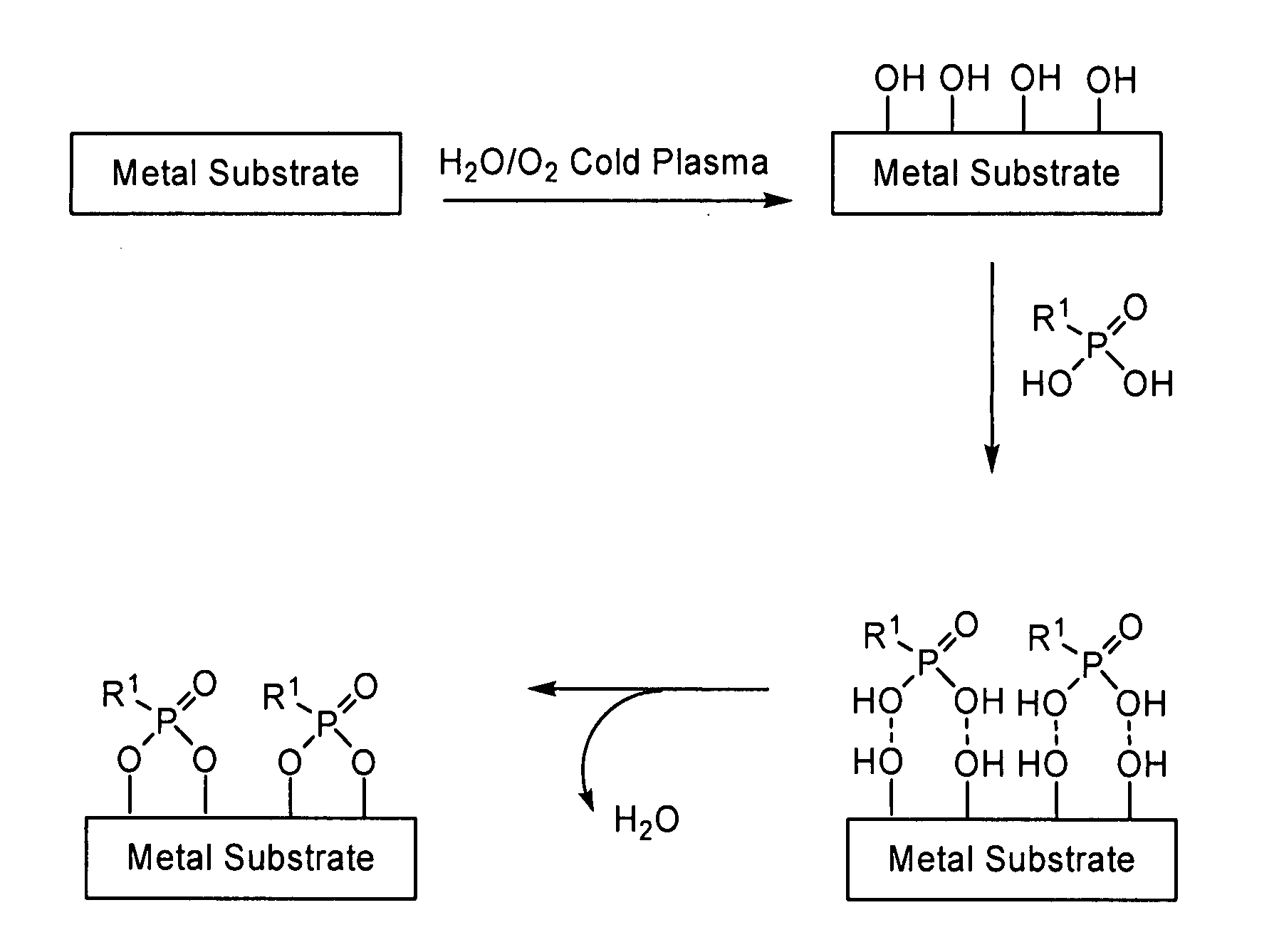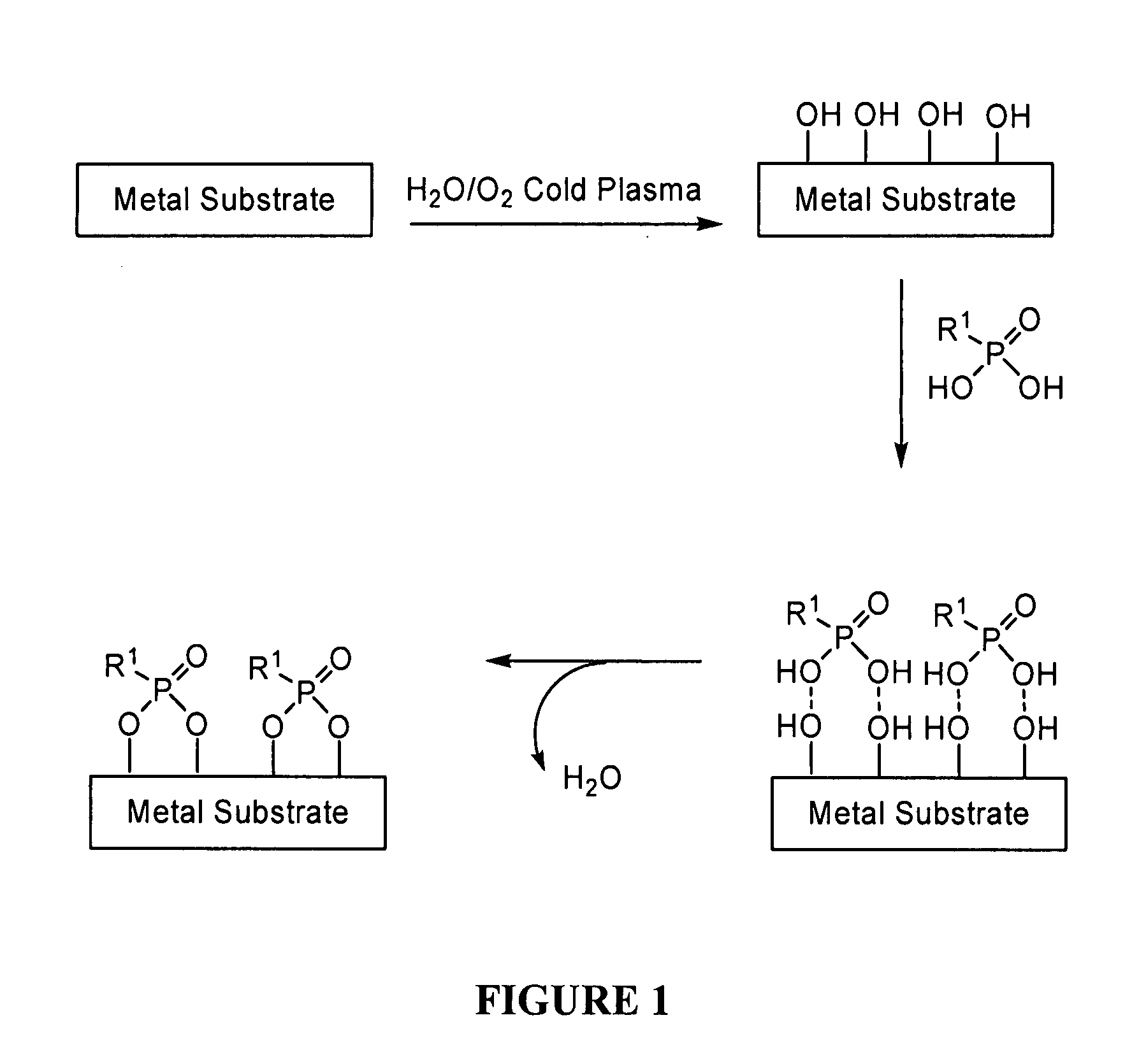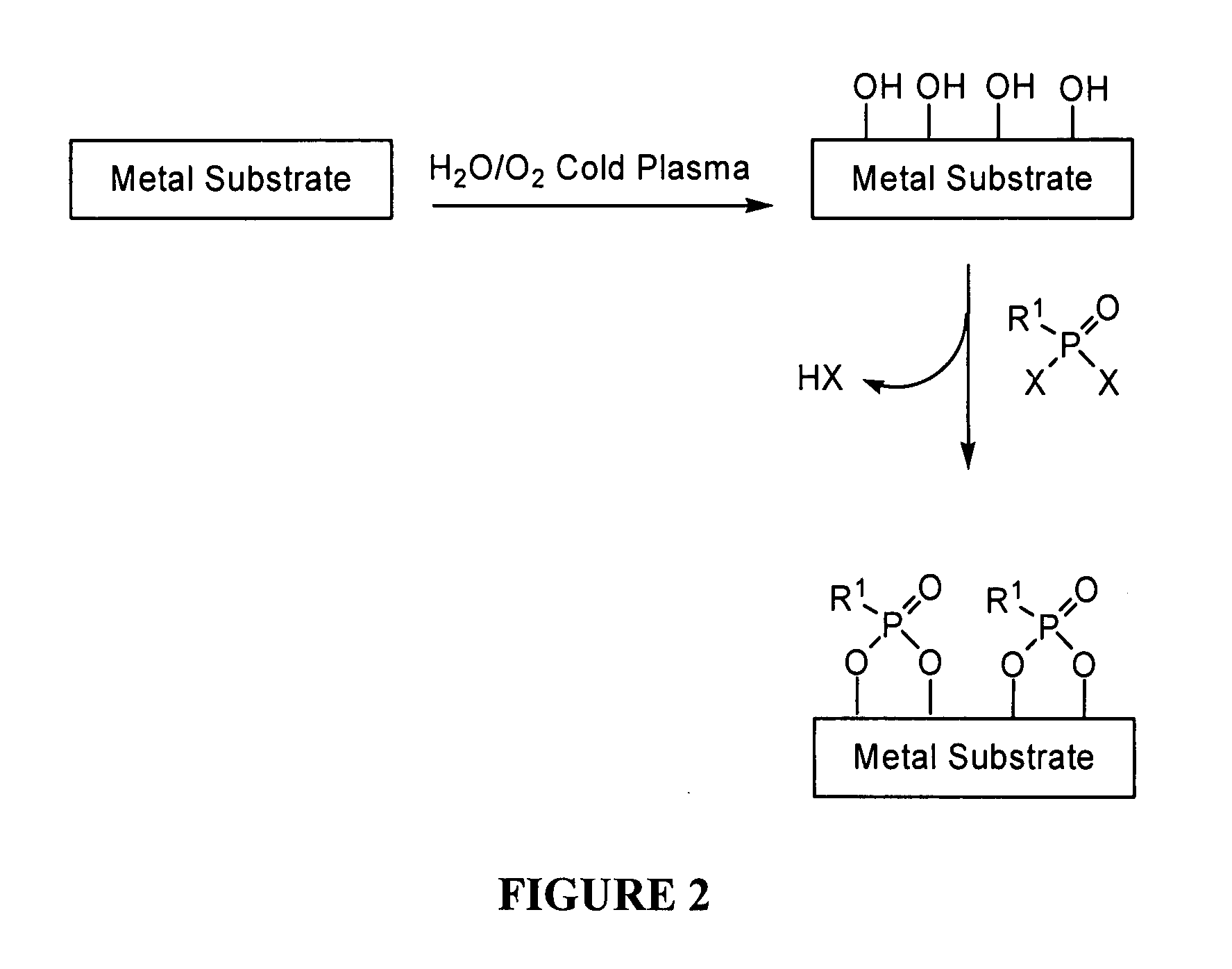Covalent modification of metal surfaces
a metal surface and covalent technology, applied in the direction of prosthesis, solid state diffusion coating, blood vessels, etc., can solve the problems of mechanically robust coatings with long-term stability, mechanical failure, dramatic reduction of film properties,
- Summary
- Abstract
- Description
- Claims
- Application Information
AI Technical Summary
Problems solved by technology
Method used
Image
Examples
example 1
[0358] A coupon of 316 stainless steel is placed in an oxidation reactor and treated with a 1.3×1016 m−3 and 3 eV water vapor plasma at 100° C. for a period of 24 hours. The metal substrate is placed in an aqueous solution containing 5 wt % phosphonic acid functionalized poly(ethylene glycol) for one hour. The substrate is removed from the PEG solution and dried under vacuum at 160° C. for 24 hours to give the desired PEG-functionalized stainless steel. See FIG. 11.
example 2
[0359] A ½″×½″×⅛″ 316 L stainless steel coupon was cleaned with an argon plasma process (250 mtorr Ar2, 100° C., 4000 watts for 15 minutes at a flow of 2.5 slm). The freshly cleaned coupon was then exposed to an oxygen plasma treatment (250 mtorr O2, 100° C., 4000 watts for 15 minutes flow of 2.5 slm). Contact angle was found to be 8°.
example 3
[0360] A coupon of 316 stainless steel is placed in an oxidation reactor and treated with a 1.3×1016 m−3 and 3 eV water vapor plasma at 100° C. for a period of 24 hours. The metal substrate is placed in a vacuum flask and the system evacuated. The flask is backfilled with Argon and an anhydrous solution containing 5 wt % phosphonic chloride functionalized poly(ethylene glycol) in tetrahydrofuran is added. After sixteen hours, the substrate is removed from the PEG solution and dried under vacuum at 60° C. for 24 hours to give the desired PEG-functionalized stainless steel. See FIG. 12.
PUM
| Property | Measurement | Unit |
|---|---|---|
| temperature | aaaaa | aaaaa |
| mass | aaaaa | aaaaa |
| PDI | aaaaa | aaaaa |
Abstract
Description
Claims
Application Information
 Login to View More
Login to View More - R&D
- Intellectual Property
- Life Sciences
- Materials
- Tech Scout
- Unparalleled Data Quality
- Higher Quality Content
- 60% Fewer Hallucinations
Browse by: Latest US Patents, China's latest patents, Technical Efficacy Thesaurus, Application Domain, Technology Topic, Popular Technical Reports.
© 2025 PatSnap. All rights reserved.Legal|Privacy policy|Modern Slavery Act Transparency Statement|Sitemap|About US| Contact US: help@patsnap.com



